Chinese anti-tank artillery in the Korean War
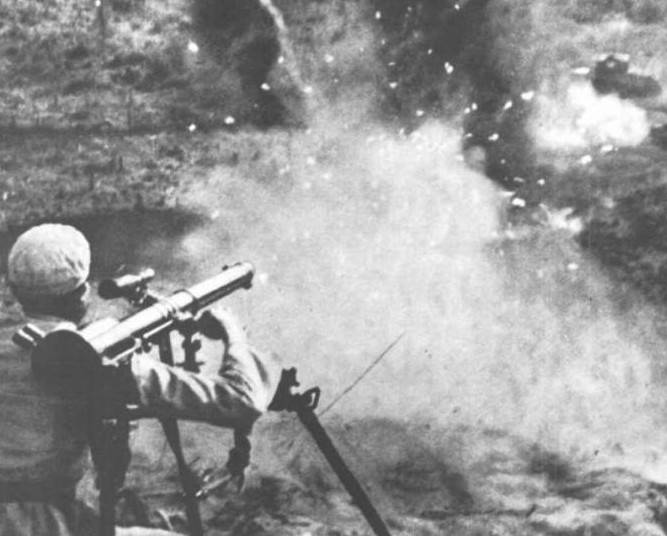
In October 1950, during the fighting on the Korean Peninsula, American troops crossed the 38th parallel, after which Mao Zedong ordered the "Chinese people's volunteers" to cross the Yalu River and side with the DPRK.
The appearance of units of the regular Chinese army in North Korea came as a surprise to the United States and made it possible to stop the offensive of the UN forces. However, due to the multiple superiority of the United States and its allies in heavy weapons and the air supremacy of the American aviation, the Chinese failed to radically turn the tide of hostilities.
Subsequently, the Chinese People's Volunteers played a very large role in the Korean War. Their participation in hostilities, along with air cover from the Soviet 64th Fighter Air Corps and the material and technical support of the USSR, made it possible to avoid the defeat of the DPRK.
At the first stage of the participation of Chinese troops in the Korean War, they were equipped with anti-tank weapons was very weak. To fight tanks The Chinese infantry could use 60-mm rocket-propelled anti-tank grenade launchers, American-made cumulative rifle grenades, bundles of hand grenades and bottles of incendiary liquid that were repulsed from the Kuomintang. Specialized anti-tank artillery was represented by the 37-mm American M3A1 and 47-mm Type 1 guns, which belonged to the Kwantung Army, captured during the civil war.
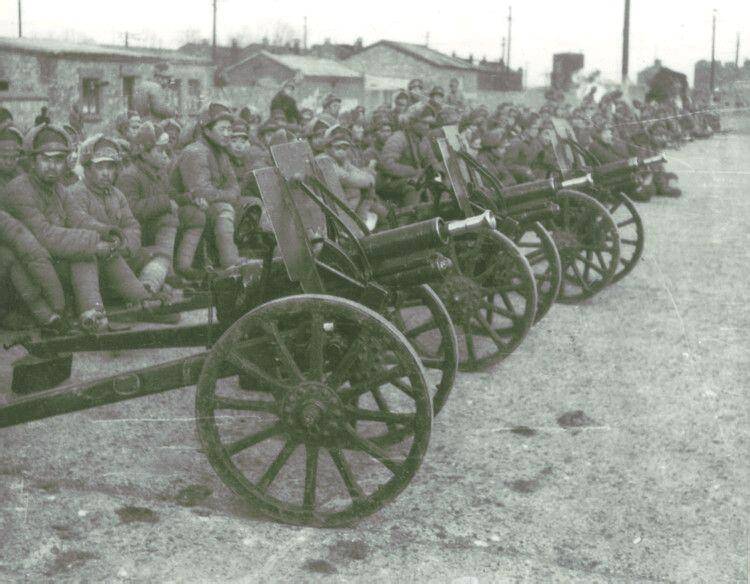
Light Japanese 70-mm howitzers Type 92 could be used against armored vehicles, in the ammunition of which there were shots with cumulative shells.
After it became clear that the war had become protracted, the Soviet Union provided very significant support in equipping the PLA with anti-tank weapons. The Chinese infantry received 14,5-mm anti-tank rifles and hand-held cumulative grenades. The artillery units received 45, 57 and 76-mm guns.
Anti-tank guns used by the Chinese People's Volunteers during the fighting on the Korean Peninsula
The most common anti-tank gun possessed by the Chinese People's Volunteers and the Korean People's Army was the Soviet 45-mm M-42 (45-mm anti-tank gun model 1942). After the victory of the Chinese communists in the civil war, the Soviet Union gave them about 1 M-000 anti-tank guns.
The mass of the gun in the firing position was 620 kg. Initial speed - 1,43 kg of armor-piercing projectile - 870 m / s. At a distance of 500 m, an armor-piercing projectile normally penetrated 61-mm armor. A sub-caliber projectile weighing 0,85 kg had an initial speed of 1070 m / s and at a distance of 300 m along the normal could penetrate 90-mm armor.
Armor penetration at the same distance when a projectile meets an obstacle at an angle of 30 ° from the normal was 65 mm. A fragmentation grenade weighing 2,14 kg contained 118 g of TNT and had a continuous zone of destruction with a diameter of 3-4 m. The rate of fire of a 45-mm cannon was 15-20 rounds / min.
Although the 45-mm gun by the beginning of the Korean War could no longer be considered modern, it was quite actively used in hostilities. Due to the relatively small mass, the M-42 cannon could be lifted to the top of the hill without the use of mechanical thrust by the forces of calculation. The 45 mm cannon had a very high firing accuracy. Having taken a comfortable position, the Chinese artillerymen most often supported their infantry with fire. Sometimes "forty-fives" were used against the armored vehicles of the UN forces.
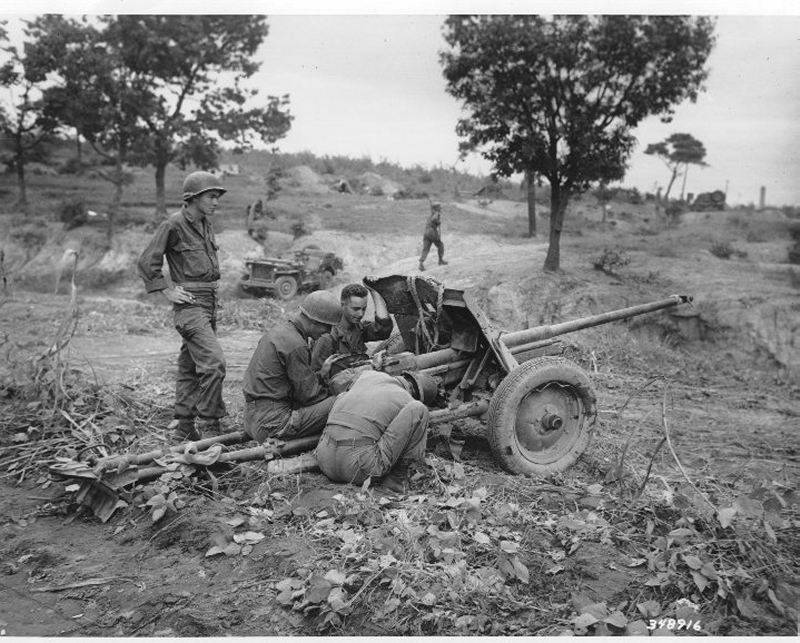
Due to the fact that 45-mm cannons were widespread in the KPA and among the Chinese people's volunteers, they often figured among the trophies captured by American and British troops.
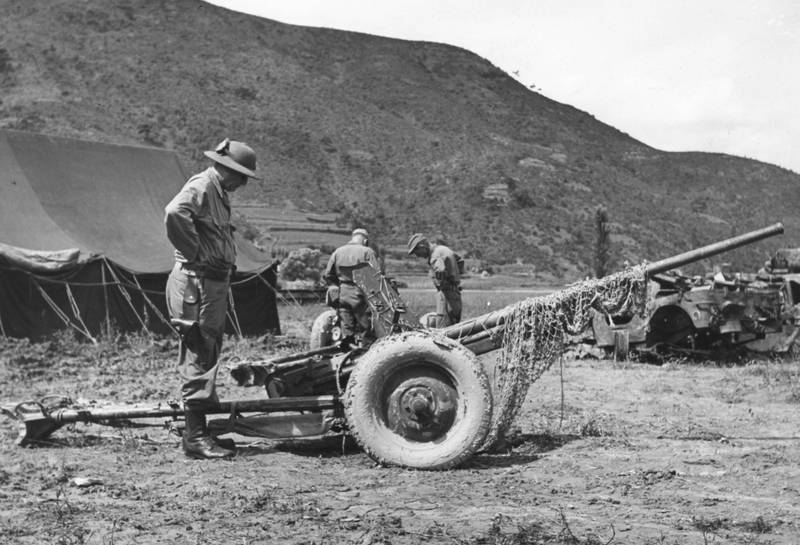
It is known that the Chinese and North Korean units that fought against the UN forces actively used captured German small arms and artillery systems. In the early 1950s, the USSR handed over to China a large batch of German 5 cm Pak anti-tank guns. 38.
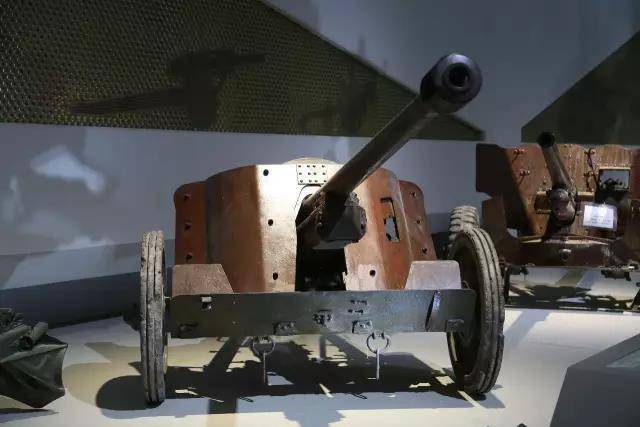
50 mm anti-tank gun 5 cm Pak. 38 at the War Museum of the Chinese Revolution
The armor penetration of the German 50-mm gun was higher than that of the Soviet 45-mm M-42 gun. A 50-mm armor-piercing projectile weighing 2,04 kg, accelerated to 835 m / s, at a distance of 500 m along the normal could penetrate 78 mm thick armor. The fragmentation shell weighing 1,81 kg contained 0,175 kg of TNT. The German gun, with a rate of fire comparable to the M-42, was 200 kg heavier, which made it less maneuverable when rolling by the crew.
During the fighting on the Korean Peninsula, Chinese People's Volunteers captured several dozen American and British-made 57-mm anti-tank guns, which had a similar design.
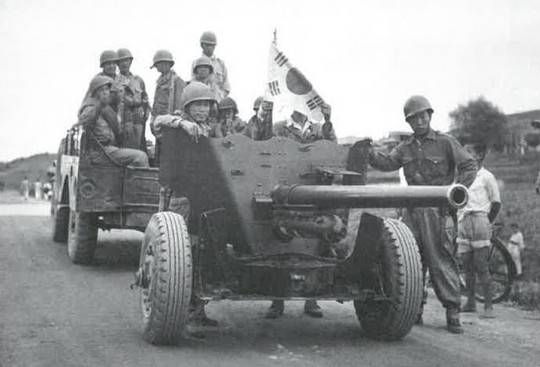
South Korean soldiers with a 57 mm gun
The American 57mm M1 cannon was a slightly modified version of the British QF 6 pounder six-pounder anti-tank gun.
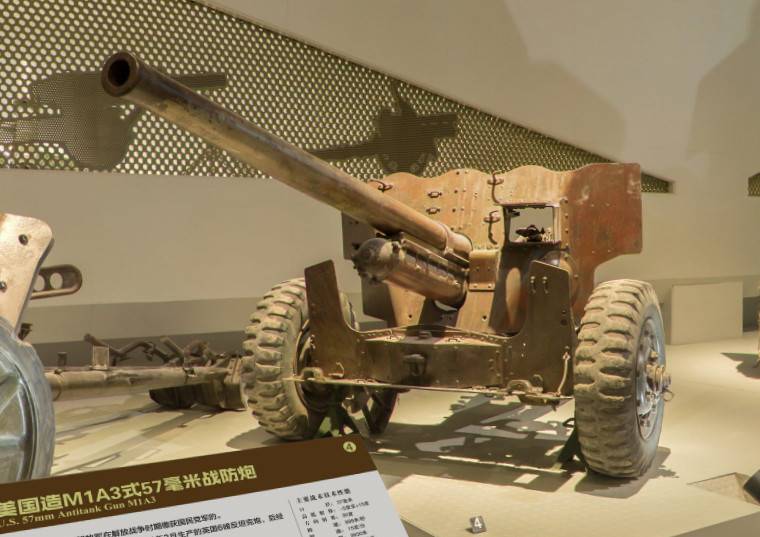
57-mm anti-tank gun М1А3 at the Military Museum of the Chinese Revolution
The exposition of the Military Museum of the Chinese Revolution has a captured American gun M1A3. With a mass in a combat position of 1 kg for its time, it was a fairly powerful weapon. According to American data, the 293 kg armor-piercing projectile had an initial velocity of 2,85 m / s. At a distance of 853 m, when hit at a right angle, it could penetrate 450-mm armor. Also, the ammunition load included shots with a fragmentation projectile weighing 110 kg, containing 2,99 g of explosives. Rate of fire - 703-12 rounds / min.
In addition to the 57-mm M1A3 anti-tank gun, the Military Museum of the Chinese Revolution has a British 57-mm QF 6 pounde Mk IV gun, which differs from the American M1A3 in a number of details.
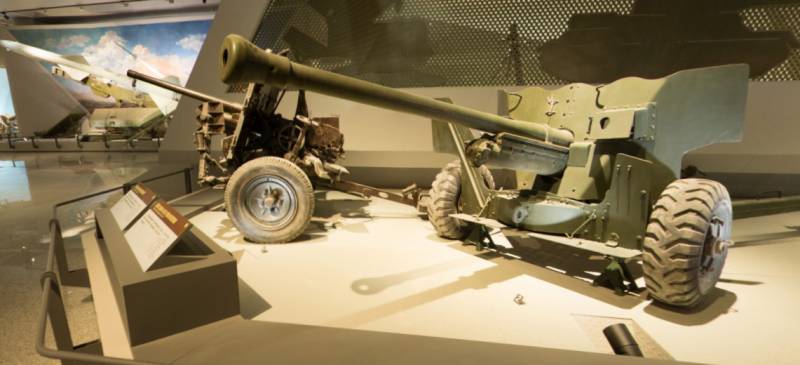
57-mm anti-tank gun QF 6 pounde Mk IV at the Military Museum of the Chinese Revolution
The main difference between the QF 6 pounde Mk IV and the M1A3 is the elongated barrel, equipped with a muzzle brake. In general, the characteristics of the American and British guns are very similar. But, due to the longer barrel length, the British gun had better armor penetration. The ammunition load of the British anti-tank gun included a round with a sub-caliber projectile capable of penetrating 914-mm armor at a distance of 98 m.
In much larger numbers than captured British and American 57-mm guns, the anti-tank divisions of Chinese People's Volunteers who fought in Korea had Soviet 57-mm ZiS-2 guns. They were mainly used as an anti-tank reserve in the depths of the defense, sometimes supporting the infantry with fire.
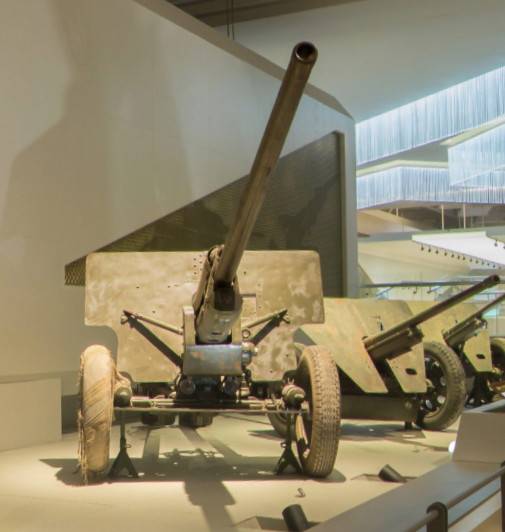
57-mm anti-tank gun ZiS-2 at the Military Museum of the Chinese Revolution
In terms of its capabilities, the ZiS-2 was superior to its western classmates.
According to the armor penetration table, a 57-mm armor-piercing projectile weighing 3,19 kg with an initial speed of 990 m / s at 500 m normally penetrated 114-mm armor. A reel-shaped sub-caliber armor-piercing projectile weighing 1,79 kg with an initial speed of 1 270 m / s could penetrate 145-mm armor under the same conditions. The ammunition also contained shots with a fragmentation grenade weighing 3,75 kg, containing 220 g of TNT. At a distance of up to 400 m, buckshot could be used against enemy infantry. The mass of the gun in the firing position was 1 kg. Rate of fire - 250 rounds / min.
The Chinese people's volunteers very actively used the divisional 76-mm cannon of the 1942 model (ZiS-3) in Korea. The three-inch guns mainly fired at targets that were not visually observed by the gunners, but it happened that they fired direct fire at enemy armored vehicles.
To combat armored targets, the ammunition contained armor-piercing caliber and sub-caliber projectiles. An armor-piercing projectile weighing 6,5 kg had an initial speed of 655 m / s, and at a distance of 500 m along the normal it could penetrate 68-mm armor. A sub-caliber projectile weighing 3,02 kg, accelerating to 950 m / s, pierced 85 mm armor at the same distance along the normal. This was enough to defeat the M4 Sherman medium tanks, but the frontal armor of the M26 Pershing, M46 Patton and Centurion Mk. 3 was invulnerable for 76,2 mm armor-piercing shells.
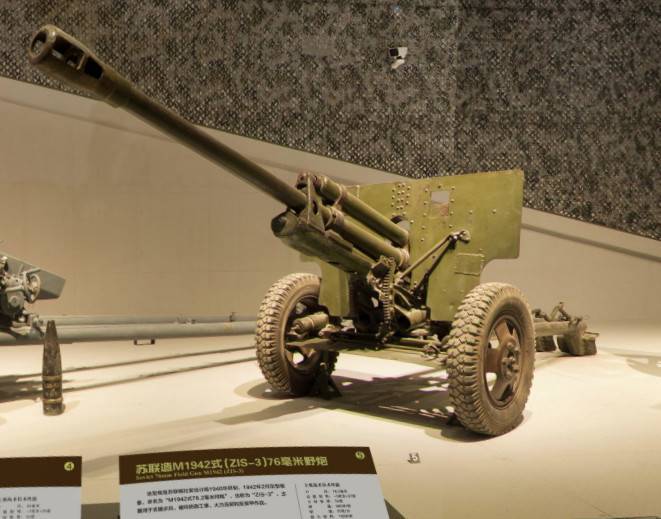
Divisional 76-mm gun ZiS-3 in the Military Museum of the Chinese Revolution
The insufficient penetration of armor-piercing shells was partly compensated by the presence of a round with a cumulative grenade in the ammunition load, which, if hit at a right angle, could penetrate 90 mm thick armor. However, shots with high-explosive fragmentation grenades weighing 6,2 kg, equipped with 710 g of explosives, were mainly used. The mass of the gun in the firing position is 1 kg. Rate of fire - 200 rounds / min.
At the disposal of the Chinese People's Volunteers who fought in Korea, there was a significant number of Japanese 75-mm Type 90 field guns, which were used in the same way as the Soviet ZiS-3.
The mass of the upgraded 75-mm gun in the firing position was 1 kg. Rate of fire: 600–10 shots / min. In addition to fragmentation, shrapnel, incendiary and smoke shells, the ammunition load included unitary shots with armor-piercing tracer shells. At a distance of 12 m, an armor-piercing projectile, when hit at a right angle, pierced 457-mm armor.
Recoilless weapons of Chinese People's Volunteers
During the fighting in Korea, the Chinese actively used captured 57 and 75-mm recoilless guns of American production.
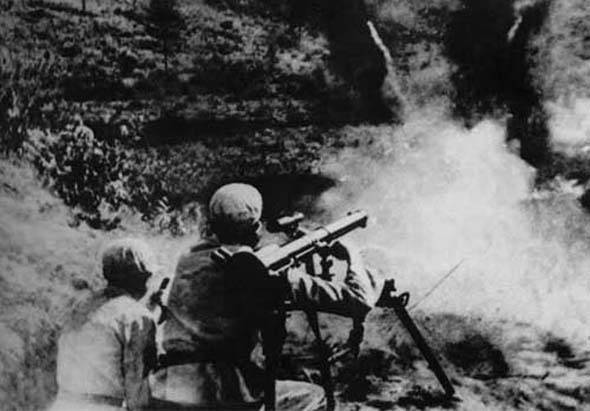
At the end of 1944, the 57-mm M18 recoilless gun was adopted as a company anti-tank weapon in the American army. Taking into account the fact that in 1950 each infantry company was supposed to have three 57-mm recoilless guns, they were very widely used in Korea. Relatively easy recoillessness could be carried and used by one serviceman, for which it was valued among the troops.
The appearance of this sample is due to the insufficient firing range and meteorological dependence of 60-mm rocket-propelled grenade launchers. Unlike the 60-mm smooth-bore "Bazooka", the 57-mm recoilless barrel had a steel rifled barrel 845 mm long. In the firing position, the 57 mm M18 recoilless gun weighed 20,2 kg. Shooting from the machine gun Browning М1917А1 or using a folding bipod provided better accuracy, but, if necessary, a shot from the shoulder could be fired at a closely located target. Guidance was carried out using an optical 2,8x sight. In terms of rate of fire, the 57-mm gun was significantly superior to hand-held anti-tank grenade launchers, an experienced crew of two could make 8 aimed shots per minute.
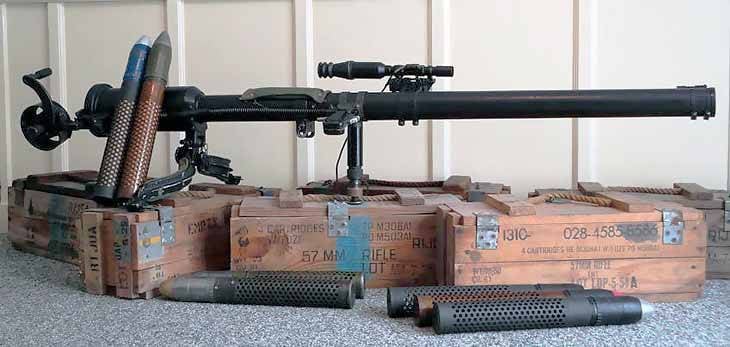
American 57 mm M18 recoilless gun with ammunition
For firing from a 57-mm recoilless gun, a unitary shot containing 450 g of smokeless powder was used. Shot weight - 2,5 kg. The steel sleeve had 400 round holes in its side walls, through which most of the powder gases, when fired, broke through into the barrel chamber and out of it back into the nozzle, thereby compensating for the recoil of the weapon. The propellant charge inside the sleeve was in a bag made of waterproof nitrocellulose fabric, which had burned out when fired. The propellant charge was ignited by a standard percussion igniter located in the bottom of the sleeve. The dangerous zone of destruction by the exhaust of the flame at the rear of the gun was 15 m.
A cumulative grenade weighing 1,2 kg had an initial speed of 370 m / s and could hit point targets at a range of up to 450 m.The maximum firing range was 4 m. armor, which was not always enough to confidently overcome the frontal armor of medium tanks. In addition to shots with cumulative grenades, the ammunition load included: fragmentation, incendiary smoke and shrapnel. Despite the fact that the effectiveness of the 000-mm M75 recoilless guns against well-protected medium and heavy tanks was not always satisfactory, they were actively used by all opposing sides until the end of hostilities.
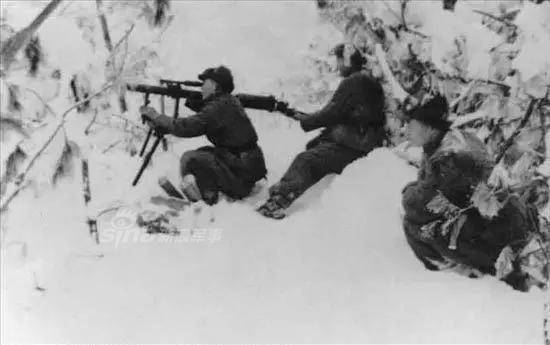
In the second half of the 1940s, the Americans handed over a set of technical documentation, several 57-mm recoilless guns and samples of ammunition to the Chiang Kai-shek government. After the defeat of the Kuomintang and the formation of the People's Republic of China in 1949, an attempt was made to establish mass production of recoilless guns under the designation Type 36 at local enterprises. The first semi-handicraft samples were of low quality and were not widely used.
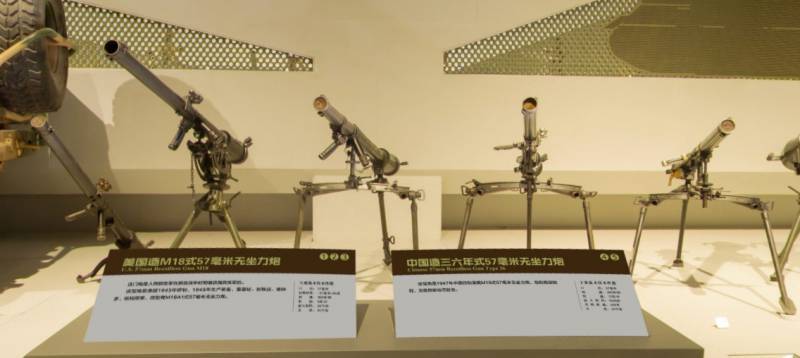
57-mm recoilless guns of American and Chinese production at the War Museum of the Chinese Revolution
The mass production of 57-mm recoilless began only in 1952, after the receipt of machine tools and special grades of steel from the USSR.
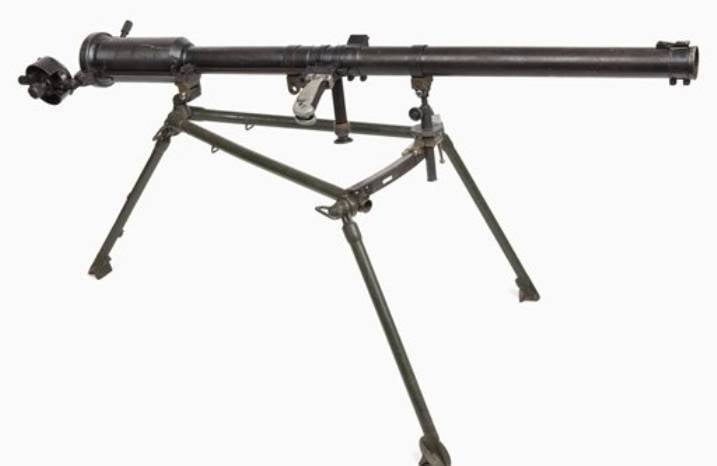
57 mm Recoilless Type 52 Gun
The Chinese-made 57 mm recoilless gun, known as the Type 52, differed from the American prototype in a number of parts and a machine that weighed 6,8 kg. American-made ammunition was suitable for firing from a Chinese gun, but it was forbidden to fire Chinese ammunition from an American recoilless gun.
The Chinese cumulative grenade had the worst characteristics. The effective fire range was reduced to 300 m, and the normal armor penetration was 70 mm. In fact, mass deliveries of Type 52 recoilless vehicles to the PLA began after the end of the armed conflict in Korea.
In parallel with the 57-mm recoilless guns, the UN troops actively used 75-mm M20 recoilless guns in Korea, which in the American army were a battalion anti-tank weapon.
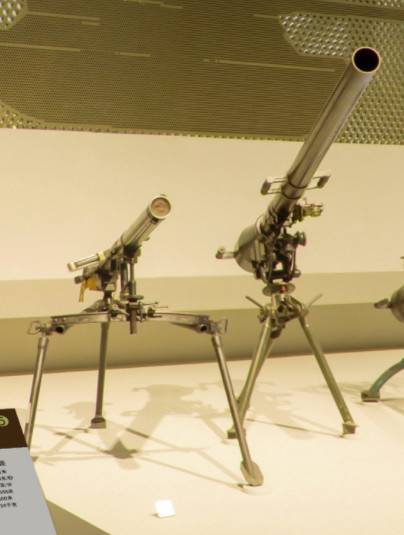
Comparative sizes of 57 and 75-mm recoilless guns available in the Military Museum of the Chinese Revolution
By its design, the M20 was in many ways reminiscent of the 57 mm M18 gun, but it was larger and heavier. The mass of a 75-mm recoilless recoil in a combat position was 72 kg. Unlike the 57 mm gun, the M20 gun fired only from the machine.
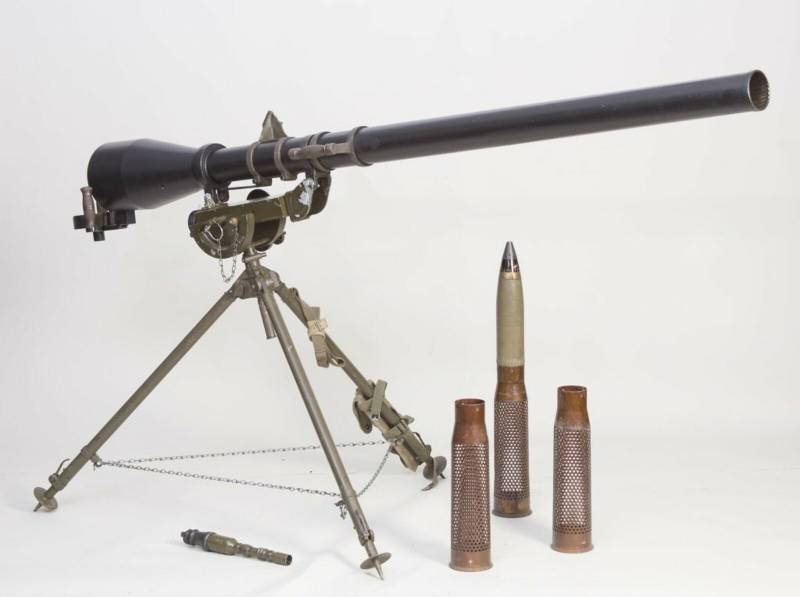
American 75-mm recoilless gun M20
The 75-mm recoilless gun could fire with cumulative and fragmentation grenades, incendiary-smoke shells and buckshot. The M20 shells had leading belts with ready-made rifling, which, when loaded, were combined with the rifling of the barrel.
The mass of the cumulative grenade is 5,7 kg, the muzzle velocity of the projectile is 310 m / s. A cumulative grenade containing 400 g of pentolite would normally penetrate 100 mm armor. The effective range of firing at tanks did not exceed 500 m, the maximum firing range of a high-explosive fragmentation projectile reached 6 m. The rate of fire was 500 rds / min.
In 1952, on the basis of the American M20 gun, its own recoilless recoil was created, also designated Type 52. Due to the use of low-grade steel, the barrel of the Chinese gun became thicker, and the gun itself became heavier. Chinese-made cumulative grenades had armor penetration - no more than 90 mm and not very reliable fuses. The ammunition load of the 75-mm Type 52 also included shots with fragmentation grenades.
Use of Chinese anti-tank artillery in the Korean War
In terms of the terrain and the nature of the hostilities, the Korean War was very different from the conditions in Europe.
This, in turn, influenced the ways of using armored vehicles and combating them. However, there was something in common - as in Europe, the Americans' main means of fighting enemy tanks was aviation. B-26 and B-29 bombers attacked concentrations of Chinese and North Korean tanks, destroyed bridges and made roads impassable in mountainous areas. Piston and turbojet attack aircraft and fighter-bombers hunted for individual tanks and made it impossible to transport fuel and ammunition during daylight hours.
In turn, the main losses were suffered by the armored vehicles of the UN forces at mine-explosive barriers and from light infantry anti-tank weapons. After the front line stabilized, the Americans and British mainly used their tanks as mobile firing points, to support their infantry in repelling enemy attacks, as well as to shell enemy positions.
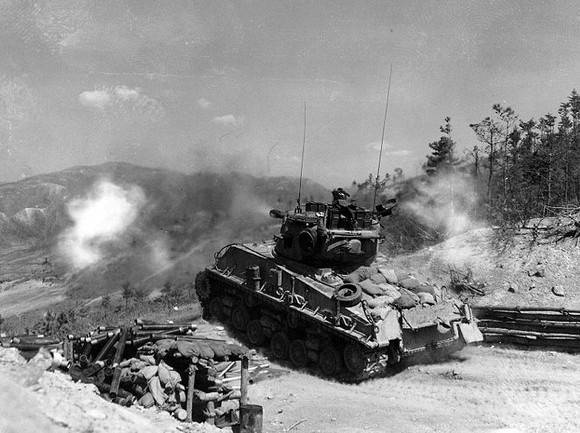
M4A4 tank firing at enemy positions
For firing, American and British tanks usually took up a position on a hill, trying to turn towards the enemy with the most protected frontal projection. In the role of nomadic artillery pillboxes, the Americans most often used "Shermans", however, until the armistice was concluded, the M24 Chaffee tanks continued to remain in the troops. Although in terms of protection, the Chaffee was much inferior to medium tanks: with the same firepower, a light tank had better mobility and maneuverability.
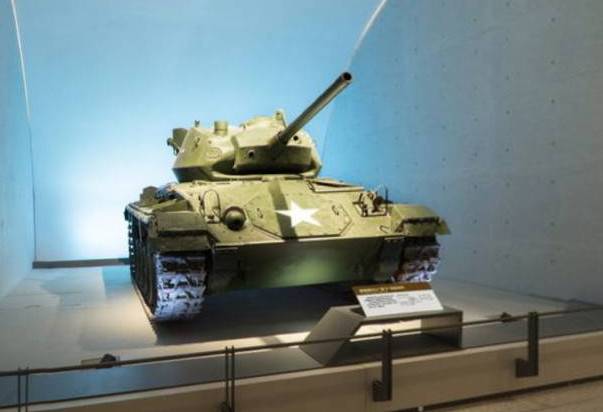
Light tank M24 at the Military Museum of the Chinese Revolution
Often, when medium tanks could not climb steep slopes, light armored vehicles were used to provide fire support to the American infantry. The self-propelled anti-aircraft guns М16А1 / А2 and М19А1 showed themselves very well in this.
The M16A1 / A2 self-propelled anti-aircraft guns were created on the chassis of the M3 half-track armored personnel carrier by installing on it a quad 12,7-mm M45 Quadmoun machine gun with a total rate of fire of 2 rds / min. This ZPU, nicknamed the "meat grinder", literally swept away the attacking lines of the Chinese infantry at a distance significantly exceeding the effective range of small arms fire.
In the course of hostilities in Korea, ZSU equipped with four large-caliber machine guns turned out to be in great demand. Half-tracked armored personnel carriers, protected from small arms bullets, weighing 9,8 tons, could climb slopes that were inaccessible to tanks.
The ZSU М19А1, armed with two 40-mm machine guns, was no less in demand. This vehicle, based on the M24 Chaffee light tank, inherited its maneuverability and mobility.
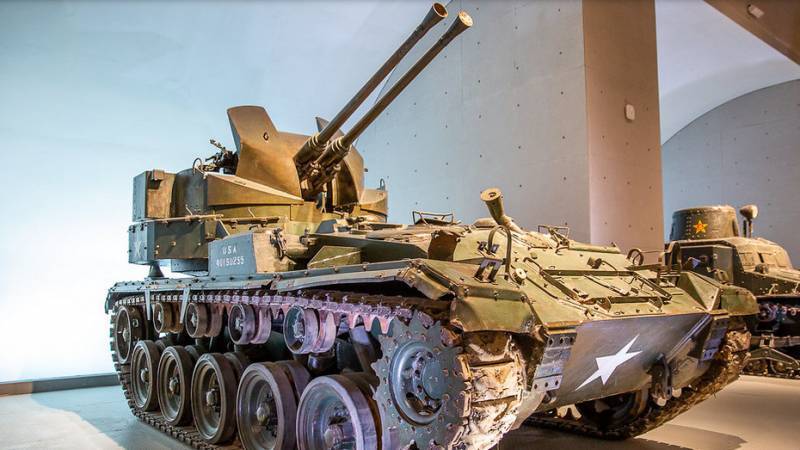
Anti-aircraft self-propelled gun М19А1 at the Military Museum of the Chinese Revolution
The vehicle weighing 18 tons was covered with 13 mm armor, which provided protection against bullets and light shrapnel. On the M19 highway, it accelerated to 56 km / h, the speed over rough terrain did not exceed 20 km / h. Combat rate of fire when firing bursts reached 120 rds / min. Since the ammunition was consumed very quickly when firing in bursts, about 300 more shells in cassettes were transported in special trailers.
Taking into account that the direct firing range of the 40-mm anti-aircraft machine Bofors L / 60 practically corresponded to the direct firing range of the 45-mm M-42 cannon, 19-1 artillery guns were most often used to counter the M75A122 ZSU firing at ground targets -mm, shooting from closed positions, and 60-120-mm mortars.
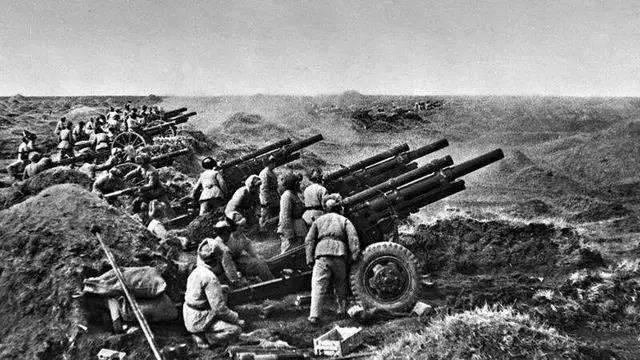
Chinese artillery fires at the enemy, in the foreground captured 105-mm American-made M101 howitzers
Artillery and mortar shelling posed a great danger to lightly armored vehicles. An artillery shell or mortar mine that fell from above into the combat compartment of an anti-aircraft self-propelled gun, with a high degree of probability, led to the death of the crew and the loss of the vehicle. Heavy fragments generated by the close burst of a large-caliber mine or a howitzer projectile could penetrate the bulletproof armor of a light tank or SPAAG.
Large-caliber mines and howitzer shells were dangerous even for medium and heavy tanks. With a direct hit, the relatively thin upper armor could be broken, the sights, weapons and chassis could be damaged.
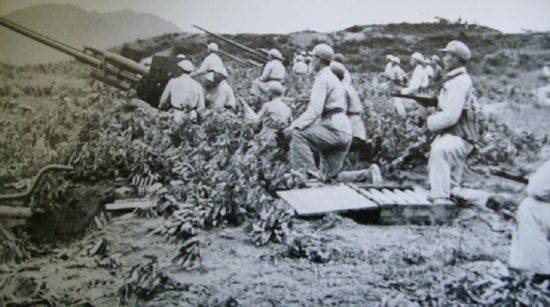
Chinese 76-mm guns ZiS-3 in a firing position
The 76-mm regimental guns of the 1927 model and the 1943 model, which were at the disposal of the Korean People's Army and the Chinese People's Volunteers, proved to be quite good during the hostilities in Korea.
Taking into account the fact that the 76-mm regimental guns' ammunition included cumulative shells with 70-100 mm armor penetration, in favorable conditions they posed a danger even for medium tanks.
The most popular anti-tank gun used by Chinese People's Volunteers in Korea was the 45mm M-42. Although in terms of armor penetration this gun was inferior to more powerful anti-tank systems, the mass, unpretentiousness and good accuracy outweighed all the disadvantages. But the most valuable quality of the forty-five was its high maneuverability. If necessary, the 45-mm cannon was lifted on hand to the top of a steep hill, where it could support the infantry attack with fire and engage in a fire duel with a tank or self-propelled anti-aircraft gun.
Due to their relatively modest weight and the ability to carry over long distances, 57 and 75 mm recoilless guns were very popular in Chinese anti-tank units. The small effective firing range of recoillessness was compensated by the ability to quickly take a comfortable position and fire a dagger shot at a vulnerable spot of an enemy armored vehicle from a minimum distance. After the end of hostilities, the Chinese command recognized the captured 75-mm M20 recoilless gun as the best anti-tank weapon.
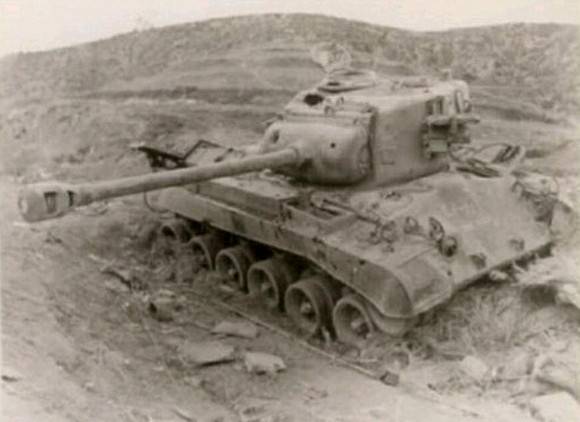
Destroyed American tank М26 Pershing
According to information published in the official media of the DPRK, the Americans and their allies lost more than 3 armored vehicles during the Korean War. How much this figure corresponds to reality is difficult to say. It is also impossible to establish exactly how many enemy tanks were disabled and destroyed by Chinese anti-tank artillery.
To be continued ...
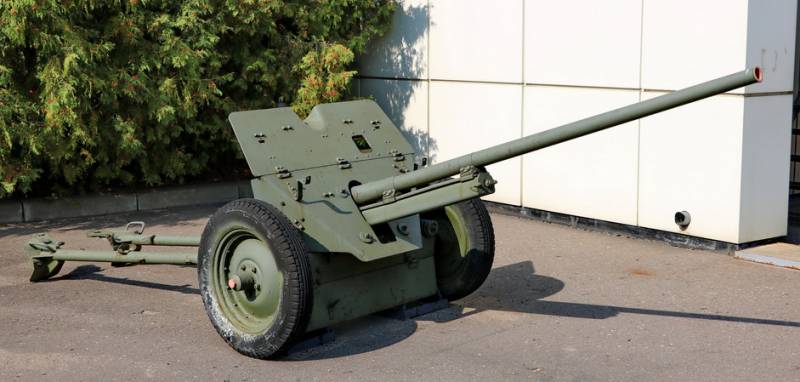
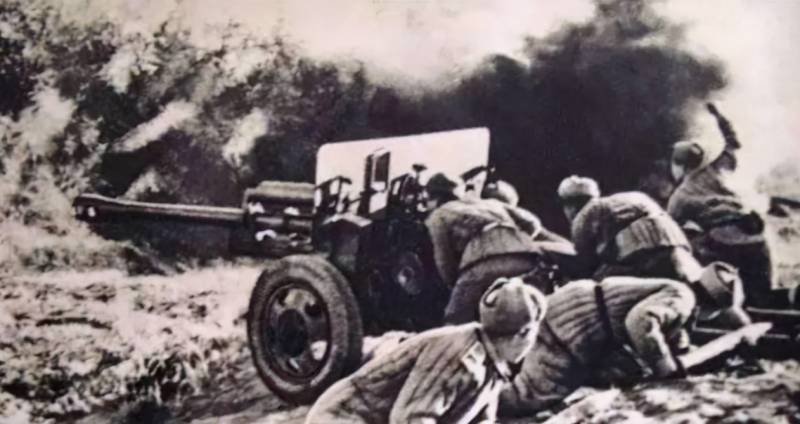
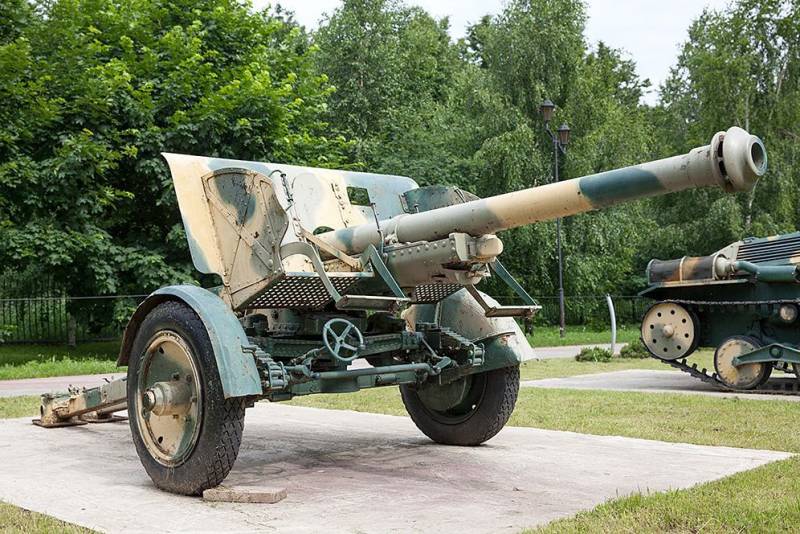
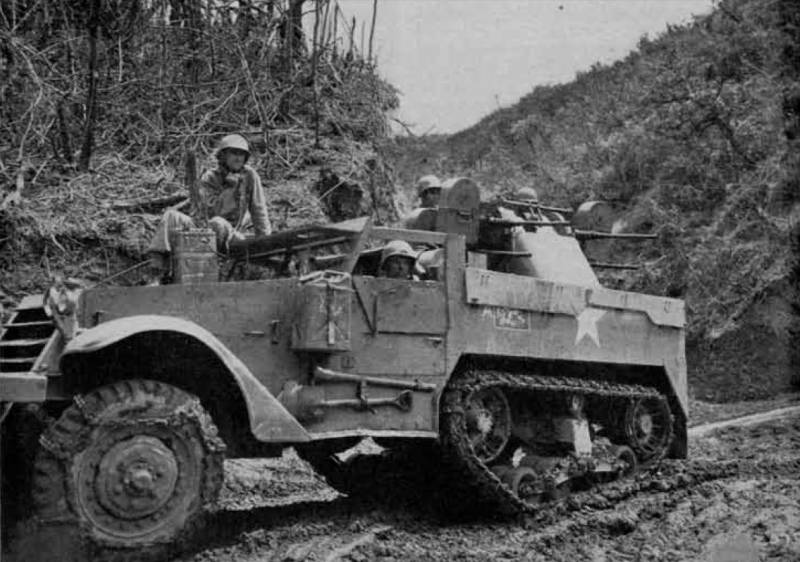

Information